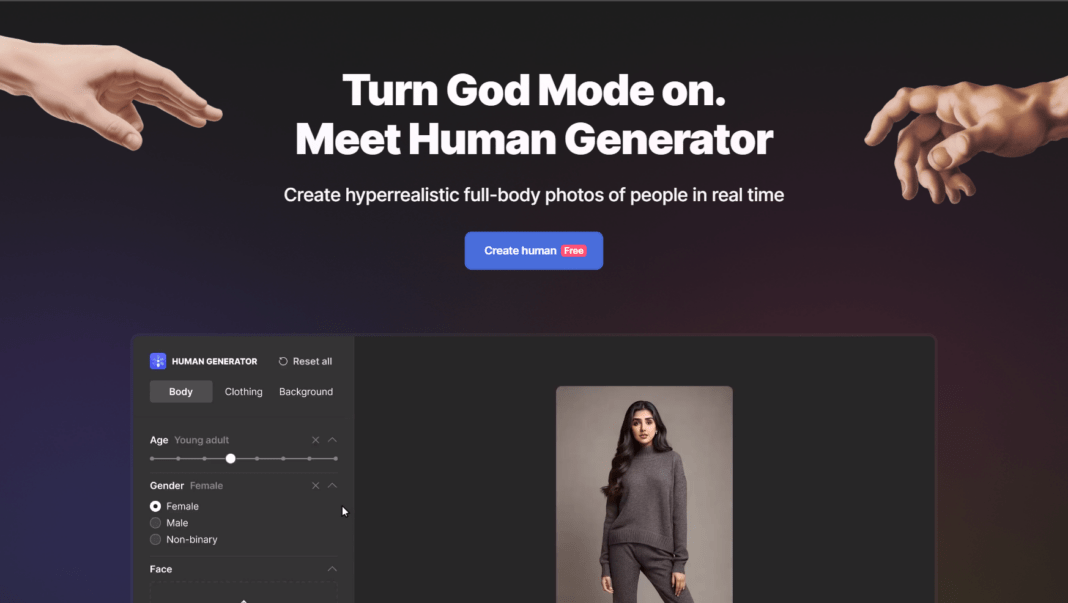Hey there, fellow marketing aficionado! Cast your mind back to the golden age of marketing. Remember those catchy jingles, vibrant billboards, and charismatic TV commercials? Fast forward to today, and we’re on the cusp of a marketing revolution. Enter synthetic humans, the intriguing blend of technology and creativity. Ready to unpack this? Let’s dive deep.
The Intersection of AI and Marketing
The world of marketing has always been in a state of flux. From the days of town criers announcing the latest products in the market square to the sophisticated digital ads tailored to individual preferences, the essence of marketing has remained the same: reaching the right audience with the right message. But the tools and strategies? They’ve evolved dramatically, especially with the advent of artificial intelligence. Let’s unpack this fascinating intersection of AI and marketing.
Historical Context
To truly appreciate the impact of AI on marketing, it’s essential to understand the journey. Traditional marketing was a game of broad strokes—mass advertising, hoping to appeal to as many as possible. But as the digital age dawned, data became the new gold. Every click, like, share, and comment became a data point, a tiny clue into consumer behavior. Enter AI, the master detective capable of analyzing these clues unprecedentedly.
Personalization is King
One of the most significant impacts of AI in marketing is personalization. Remember when you browsed for a product online and saw ads for similar products on different platforms? That’s AI-driven targeted advertising in action. By analyzing vast data, AI can predict what a consumer will likely purchase next, allowing brands to tailor their ads to individual preferences. It’s no longer about casting a wide net; it’s about precision fishing.
Chatbots and Customer Interactions
Ever visited a website and had a chat window pop up, offering assistance? More often than not, that’s a chatbot powered by AI. These virtual assistants can handle a range of customer queries, from product details to after-sales support. They’re available 24/7, ensuring that brands can engage with customers round the clock.
Predictive Analysis and Market Trends
AI doesn’t just react to current data; it predicts future trends. By analyzing patterns, AI can forecast market shifts, allowing brands to adjust their strategies proactively. Whether anticipating a surge in demand for a product or identifying emerging market segments, AI offers marketers a glimpse into the future.
Content Creation and Curation
AI is not just about number crunching; it’s also venturing into the creative realm. Tools that can craft content, from blog posts to video scripts, based on data inputs are emerging. Moreover, AI can curate content for users, ensuring they see the most relevant and engaging material, enhancing user experience.
What are Synthetic Humans?
When you hear the term “synthetic humans,” it might conjure up images from sci-fi movies or futuristic novels. But in today’s age, this concept is not just a fragment of imaginative fiction; it’s a tangible reality. Let’s delve deeper into understanding these intriguing digital entities.
At the heart of it, synthetic humans are digitally constructed personas meticulously designed to resemble real humans in appearance and, in some advanced cases, behavior. They’re not mere avatars or digital representations; they’re complex entities crafted using a blend of advanced graphics, AI algorithms, and vast datasets.
The technology behind synthetic humans is nothing short of revolutionary. Advanced AI models, often neural networks, are trained on vast datasets comprising millions of human images. This training allows the AI to understand intricate details of human faces, from the curve of the lips to the twinkle in the eyes. Once trained, these models can generate entirely new human faces that have never existed in the real world but look astonishingly real.
Tools like Human Generator have been at the forefront of this innovation. By leveraging diverse datasets and cutting-edge AI algorithms, they produce images that challenge our understanding of what’s real and digital. But it’s not just about creating a realistic face. The true marvel lies in the nuances—the play of light on the skin, the subtle expressions, the lifelike gaze. These details bridge the gap between a digital image and a believable synthetic human.
But why the need for synthetic humans? The applications are vast. From populating virtual worlds in video games to serving as customizable models in advertising campaigns, synthetic humans offer a solution that’s both scalable and customizable. Moreover, as technology advances, we see synthetic humans that can look real and behave realistically, mimicking human emotions and responses.
Benefits of Using Synthetic Humans in Marketing
Cost-effectiveness:
Traditional marketing campaigns can be a financial drain, especially those involving human models or celebrities. Think about the costs: hiring models, organizing photoshoots, managing logistics, and post-production edits. Synthetic humans streamline this process. With a one-time investment in creating a digital model, brands can repurpose and use them across multiple campaigns, leading to significant cost savings in the long run.
Customization and Flexibility:
Every brand has a unique story and a specific target audience. Synthetic humans can be tailored to resonate with different demographics, ensuring the brand’s message hits the mark. Do you need a model with a specific hairstyle, attire, or mood for a particular campaign? No problem. The customization possibilities are virtually limitless, allowing for highly targeted and effective campaigns.
Consistency Across Campaigns:
Brands thrive on consistency. It’s what makes them recognizable and trustworthy. Synthetic humans offer unparalleled consistency. They don’t age, their mood is always on point, and they’re perpetually on-brand. This ensures that the brand image remains cohesive and consistent across different campaigns and platforms.
Global Reach and Localization:
In today’s globalized world, brands often cater to diverse international markets. Synthetic humans can be easily adapted to resonate with different cultures and regions. This localization ensures that marketing campaigns are culturally sensitive and relevant, enhancing their effectiveness in various global markets.
Round-the-Clock Availability:
Unlike human models, synthetic humans are available 24/7. Whether it’s for real-time interactions in virtual showrooms or timely updates in dynamic ad campaigns, synthetic humans ensure that the brand is always present and engaging with its audience.
Future-proofing Campaigns:
The digital realm rapidly evolves, with new platforms and mediums emerging regularly. Synthetic humans, being digital entities, can easily adapt to these changes, ensuring that marketing campaigns remain cutting-edge and relevant.
Reducing Logistical Challenges:
Traditional photoshoots have many logistical challenges – from coordinating schedules to managing locations and sets. With synthetic humans, these challenges are eliminated. Brands can quickly produce high-quality visuals without the associated logistical nightmares.
Ethical and Sustainable Marketing:
Using synthetic humans can also address ethical concerns in marketing. There’s no risk of exploiting models, and it provides a sustainable alternative to resource-intensive photoshoots, aligning with the growing emphasis on ethical and eco-friendly business practices.
Ethical Considerations
But let’s pump the brakes for a moment. The realm of synthetic humans isn’t without its shadows. Authenticity, a cornerstone of impactful marketing, comes under scrutiny. Can brands genuinely resonate with audiences using a digital facade? And there’s the darker side of the tech: potential misuse and the specter of deepfakes. It’s a tightrope walk between innovation and ethical responsibility.
Challenges and Limitations
Every innovation comes with its set of challenges. On the technical front, crafting a synthetic human that truly mimics human nuances is a Herculean task. Then there’s the audience’s reception. Not everyone’s thrilled about interacting with a digital entity, no matter how lifelike. Balancing technological prowess with audience acceptance is the real challenge.
The Future Landscape: Predictions and Trends
The realm of synthetic humans, while still in its nascent stages, is teeming with potential. At this exciting crossroads, it’s worth pondering: What does the future hold for synthetic humans, especially in the marketing world? Let’s embark on a speculative journey, exploring the predictions and trends that might shape this landscape.
Beyond Visuals – Embracing Interactivity:
While today’s synthetic humans primarily exist as visual entities, the future promises a shift toward interactivity. We might see synthetic humans equipped with advanced AI capable of real-time interactions, holding conversations, and understanding and responding to human emotions. Imagine a virtual brand ambassador that can engage in meaningful conversations with consumers.
Hyper-personalized Marketing Campaigns:
With the ability to customize every aspect of a synthetic human, brands could create hyper-personalized marketing campaigns. Based on user data and preferences, synthetic humans could adapt in real-time, ensuring that every interaction is tailored to the individual consumer’s desires and needs.
Seamless Integration in Augmented Reality (AR) and Virtual Reality (VR):
As AR and VR technologies become more mainstream, synthetic humans will likely play a pivotal role. They could serve as guides in virtual showrooms, hosts in digital events, or even companions in virtual worlds, enhancing user experience in immersive environments.
Ethical and Regulatory Evolution:
As synthetic humans become more prevalent, there will undoubtedly be a surge in ethical debates and potential regulatory frameworks. Issues surrounding data privacy, consent, and the possible misuse of synthetic imagery will take center stage, prompting industries and governments to establish guidelines.
The Rise of Synthetic Influencers:
We’ve already seen the emergence of virtual influencers on platforms like Instagram. The future might see a proliferation of such entities, with synthetic influencers holding as much sway and influence as their human counterparts, if not more.
Advanced Emotional Intelligence:
Future synthetic humans might be equipped with advanced emotional AI to read and respond to human emotions. This could revolutionize sectors like customer service, where empathetic interactions are crucial.
Blurring the Lines of Reality:
As technology advances, distinguishing between real and synthetic humans might become increasingly challenging. This could lead to intriguing scenarios in entertainment, where synthetic actors could star alongside real ones, or in marketing, where campaigns could seamlessly blend reality and digital artistry.
Addressing the Uncanny Valley:
One of the challenges with synthetic humans is the uncanny valley – the discomfort people feel when a digital entity looks almost, but not quite, human. As technology evolves, we’ll likely see synthetic humans surpassing this hurdle, indistinguishable from real humans.
Sustainable and Eco-friendly Marketing:
Synthetic humans offer a sustainable alternative to traditional marketing methods. As the world shifts towards eco-friendly practices, the reduced carbon footprint of digital campaigns using artificial humans might become a significant selling point.
Conclusion
Time to tie it all together. Synthetic humans in marketing? It’s audacious, groundbreaking, and undeniably intriguing. But as with all tools, its efficacy lies in its application. For us marketers, the challenge is twofold: harnessing this innovation while ensuring we never lose sight of our primary goal—genuine, authentic connections. Whether with flesh-and-blood humans or their impeccably designed synthetic counterparts, the heart of marketing remains unchanged.








